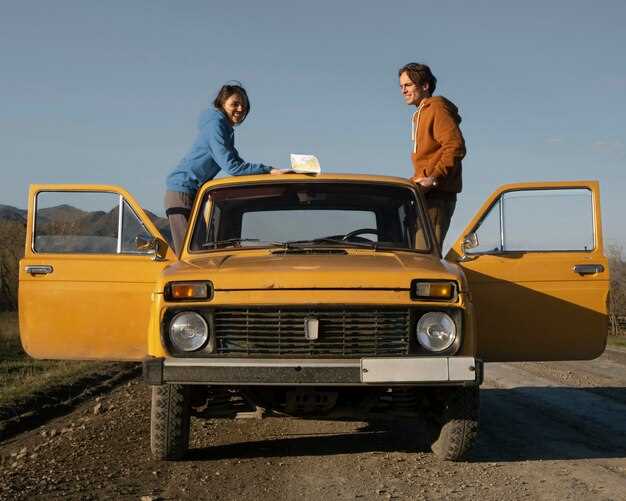
When it comes to shipping a classic or vintage car across the country, meticulous planning and attention to detail are essential. Whether you’re moving a rare collector’s piece or a family heirloom, the transport process can be daunting, but knowing the right approaches can help ease the journey. This guide will walk you through important considerations to ensure your classic vehicle arrives safely at its destination.
First and foremost, understanding the different methods of shipping vintage cars is crucial. Options range from open transport to enclosed carriers, each with its own advantages and disadvantages. Enclosed transport, while often more expensive, provides an added layer of protection against the elements and road debris, making it a preferred choice for classic car enthusiasts concerned about their vehicle’s condition.
Additionally, preparing your vintage car for shipping will play a significant role in its safe transport. This involves specific steps such as documenting the vehicle’s condition, removing personal items, and ensuring that it is mechanically sound. By taking these precautions, you can mitigate potential risks during the journey and help ensure that your prized possession reaches its new home without any issues.
Choosing the Right Transport Method for Vintage Cars

Selecting the appropriate shipping method for your vintage car is crucial to ensure its safety and integrity during transit. When transporting classic vehicles, several factors should be considered to make the right choice.
Open vs. Enclosed Transport: Vintage cars deserve special attention, and choosing between open and enclosed transport can significantly impact their condition. Enclosed shipping offers superior protection against external elements such as weather, debris, and road hazards. This method is ideal for high-value classic cars, as it minimizes the risk of damage. Conversely, open transport is more cost-effective and suitable for less valuable vintage cars, although they are exposed during the journey.
Distance and Route: The distance your car needs to travel also influences the transport method. For long distances, consider a service that provides tracking and updates, ensuring you remain informed about your car’s journey. A direct route with minimal stops is preferable to reduce handling and potential damage.
Transport Provider Experience: Choose a shipping company that specializes in vintage car transport. Inquire about their experience with classic vehicles and their safety protocols. A reputable company will have trained staff who understand the nuances of handling vintage cars, providing you with peace of mind.
Insurance Coverage: Verify that the transport method includes comprehensive insurance coverage for your vintage car during shipping. This protection is vital to safeguard your investment against potential accidents or damages while in transit.
Ultimately, selecting the right transport method for your vintage car requires careful consideration of its specific needs and potential risks. By prioritizing protection and reliability, you can ensure safe shipping for your treasured classic vehicle.
Preparing Your Classic Car for Safe Transport
When it comes to shipping your classic car, proper preparation is essential for ensuring its safety during transport. Follow these guidelines to secure your vehicle effectively:
-
Clean Your Car
Before shipping, give your classic car a thorough wash. This helps inspectors identify any existing damage and prevents dirt from scratching the surface during transport.
-
Perform a Mechanical Check
Ensure everything is in good working order. Check fluid levels, battery condition, and tire pressure. This reduces the risk of issues during shipping.
-
Document Condition
Take comprehensive photos of your classic car from multiple angles. This documentation is crucial for insurance purposes and can help in case of damages.
-
Remove Personal Items
Clear out all personal belongings and accessories. Not only does this minimize clutter, but it also eliminates the risk of items shifting during transport and causing damage.
-
Use Appropriate Packing Materials
Consider using blankets or bubble wrap to cover sensitive areas, such as bumpers and mirrors, to protect against scratches and dents.
-
Choose the Right Shipping Method
Select an enclosed trailer for maximum protection from weather elements and road debris. This method offers the best security for your classic car.
-
Communicate with the Shipping Company
Inform the shipping company about your car’s specific needs. Ensure they understand how to properly secure it within the transport vehicle.
By taking these steps, you’ll help ensure that your classic car arrives at its destination in the same condition it left. Careful preparation is key to a successful shipping experience.
Understanding Insurance Options for Shipping Vintage Vehicles

When it comes to shipping vintage cars, choosing the right insurance is crucial for ensuring your prized possession is protected during transit. Unlike standard vehicles, classic cars often carry significant value, making adequate coverage essential.
First, it’s important to understand the types of insurance typically offered for shipping vintage cars. Most transport companies provide basic liability coverage, which may not fully compensate you in case of damage. Thus, you should look for specialized policies that cater specifically to classic and vintage vehicles.
One option is agreed value insurance, where the value of the car is determined before shipping, ensuring you receive that amount in case of loss or damage. This is especially beneficial for vintage cars, whose values can fluctuate based on market trends.
Another consideration is whether the shipping company has its own insurance policy. Verify if their coverage is sufficient and inquire about the claims process. It’s often advantageous to choose a transport company that specializes in classic cars, as they are more likely to have appropriate insurance policies in place.
Lastly, don’t overlook the importance of documenting your vintage vehicle’s condition before shipping. Take detailed photographs and keep maintenance records, as these can facilitate a smoother claims process if issues arise during transit. By carefully evaluating your insurance options, you can ensure your vintage car is protected, allowing you to enjoy the journey without worry.



